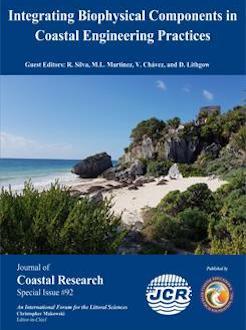Martínez, M.L.; Chávez, V.; Lithgow, D., and Silva, R., 2019. Integrating biophysical components in coastal engineering practices. In: Silva, R.; Martínez, M.L.; Chávez, V., and Lithgow, D. (eds.), Integrating Biophysical Components in Coastal Engineering Practices. Journal of Coastal Research, Special Issue No. 92, pp. 1–5. Coconut Creek (Florida), ISSN 0749-0208.
For coastal engineering practices to be considered green, biophysical fluxes need to be understood and taken into consideration from the onset of any project. Achieving this will be a great challenge and will need the interaction between different disciplines. This special issue aims at bridging the gaps between various groups that study coasts from contrasting perspectives, namely, coastal engineers, oceanographers, hydrologists, geologists, biologists, and ecologists. The topics addressed cover a wide array of ideas and approaches that include: ecosystem and coastal functioning; ecosystem-based protection and long-term engineering; and the impact of human activities. The set of case studies were performed in different countries in Latin America: Mexico, Cuba, Colombia and Brazil. With this special issue, we hope to move towards a multidisciplinary approach to sustainable coastal management and the implementation of ecosystem-based coastal protection.





